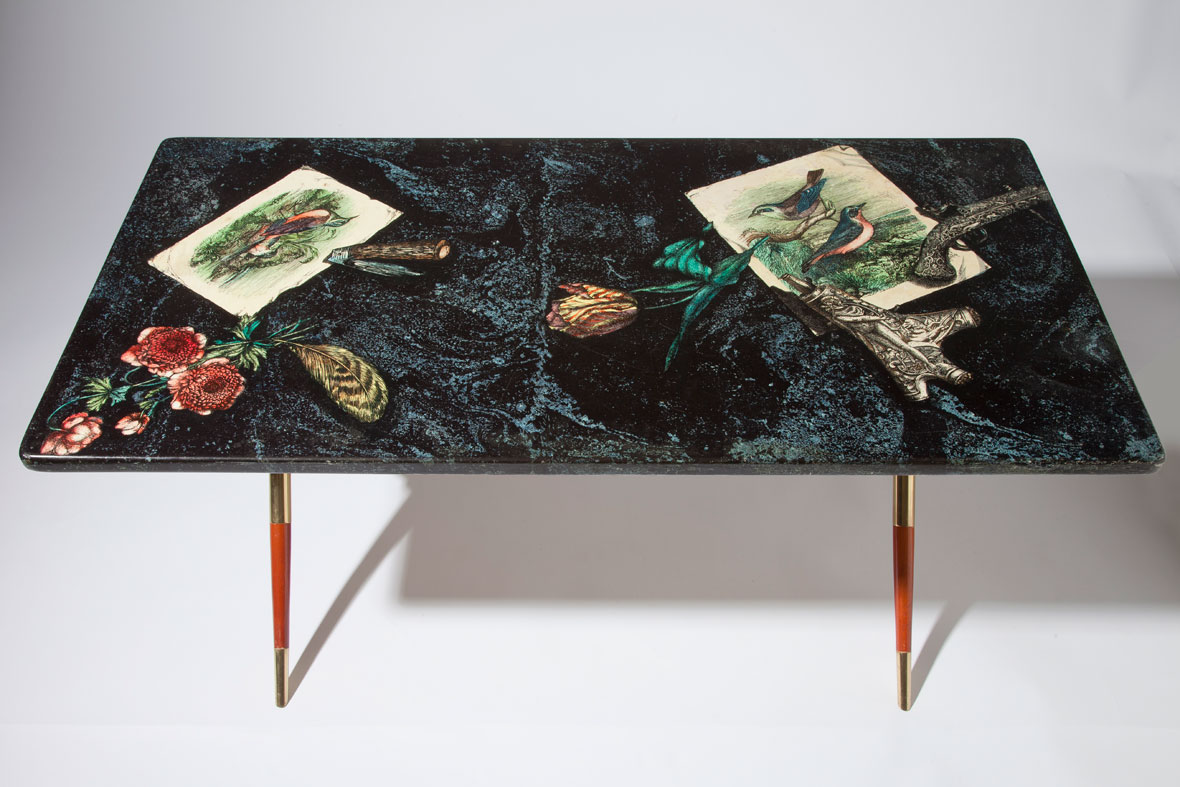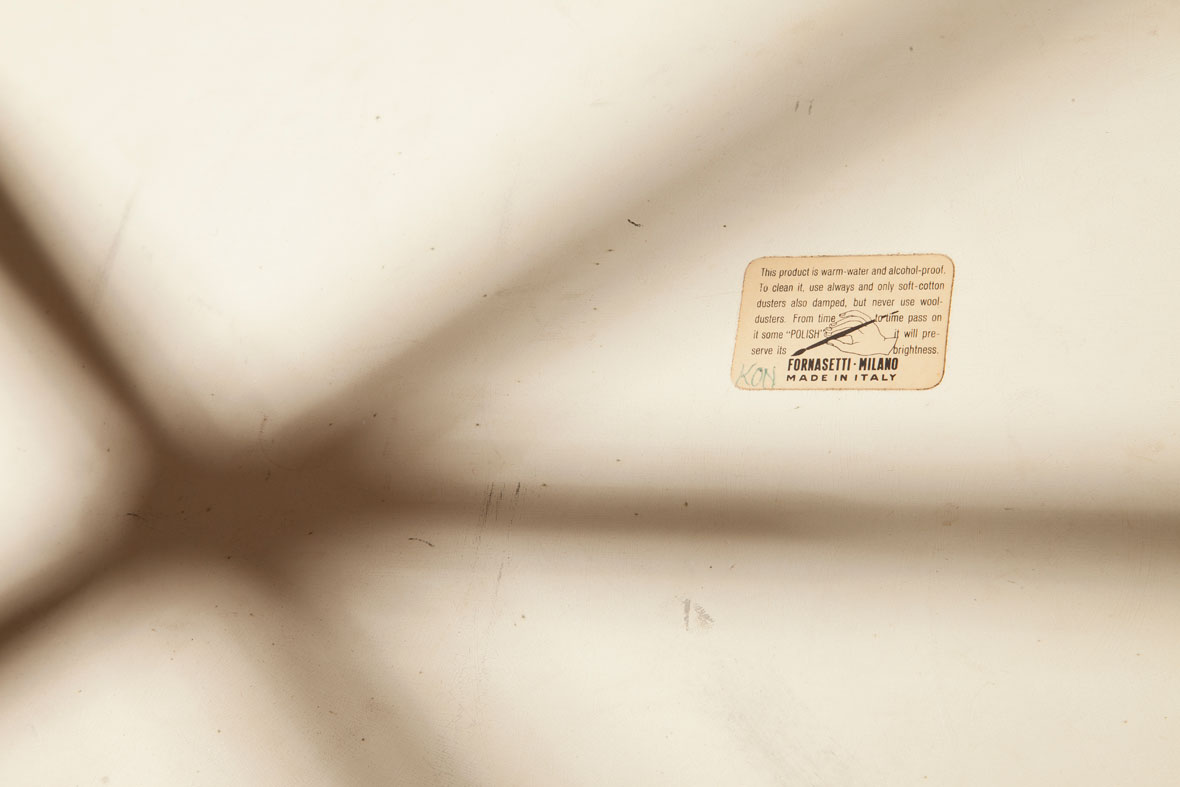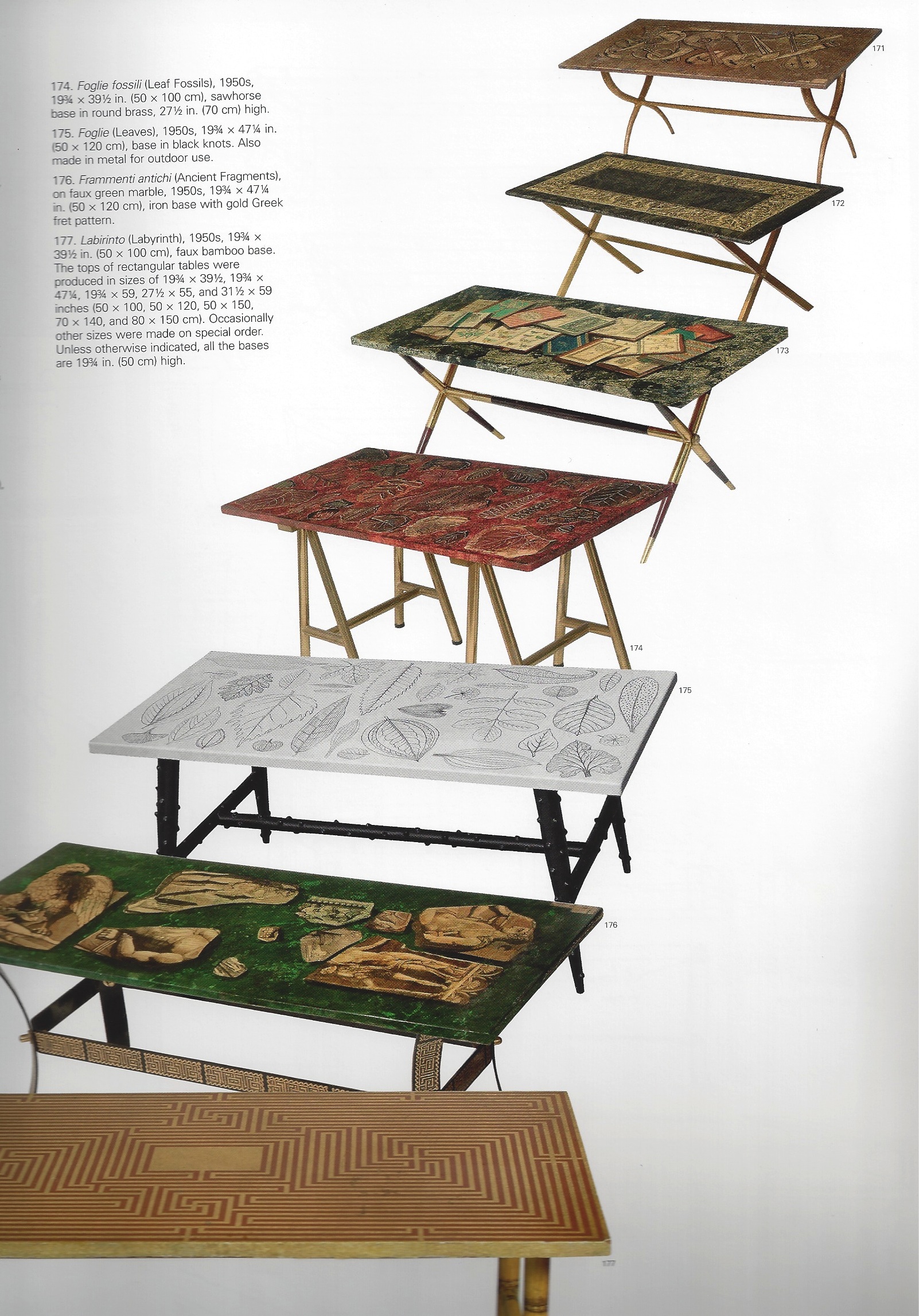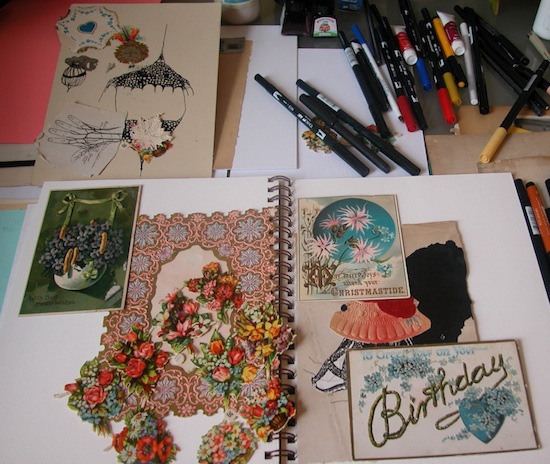Lacquer and brass base designed by Gio Ponti
19 ½ in (50 cm) high, 39 1/3 in (100 cm) wide, 19 ½ in (50 cm) deep
cf. Barnaba Fornasetti, ed., Fornasetti: The Complete Universe, 2010, p. 389, no. 173
In 1936, he met the renowned architect-designer Gio Ponti (1897-1979) by brashly submitting silk scarves printed with architectural motifs and newsprint to Italy’s Triennal design competition (for a tea service). His entry was dismissed as irrelevant, but his bravado won Ponti’s admiration, and a collaboration was born. Fornasetti was conscripted into the army during World War II. When the rest of his unit was sent to Albania, Fornasetti was assigned the task of painting the regimental barracks in the Piazza San Ambrogio, Milan. He was then later exiled to Switzerland where he designed his famous foulard (scarf) designs for a Swiss textile firm. In 1944, the first exhibition devoted to Fornasetti’s work was held at the Foyer des Etudiants in Geneva. Gio Ponti, who was 24 years Fornasetti’s senior, directed his prodigy toward the decorative arts. A founding editor of the influential architectural periodical Domus, he commissioned Fornasetti to illustrate several of its covers. The pair also designed interiors for the ill-fated ocean liner Andrea Doria, collaborated on furnishing the ballroom of the New York’s Time-Life Building in 1963 and, in honour of the first post-war Triennal design competition, produced a drop-front secretaire printed with a pastiche of architectural motifs. The prototype is now owned by the Victoria and Albert Museum in London.
Fornasetti’s most profound contribution to the modern movement may have been to ease certain distinctions between architecture, decoration and furniture design. A metaphysical design magician, he reconciled these art forms with his own capricious and joyful visual language. The ‘pa of faux’, as he was known, also championed the forward-thinking notion of serial production. Piero Fornasetti died in Milan during a minor hospital treatment on 15th October 1988.




















